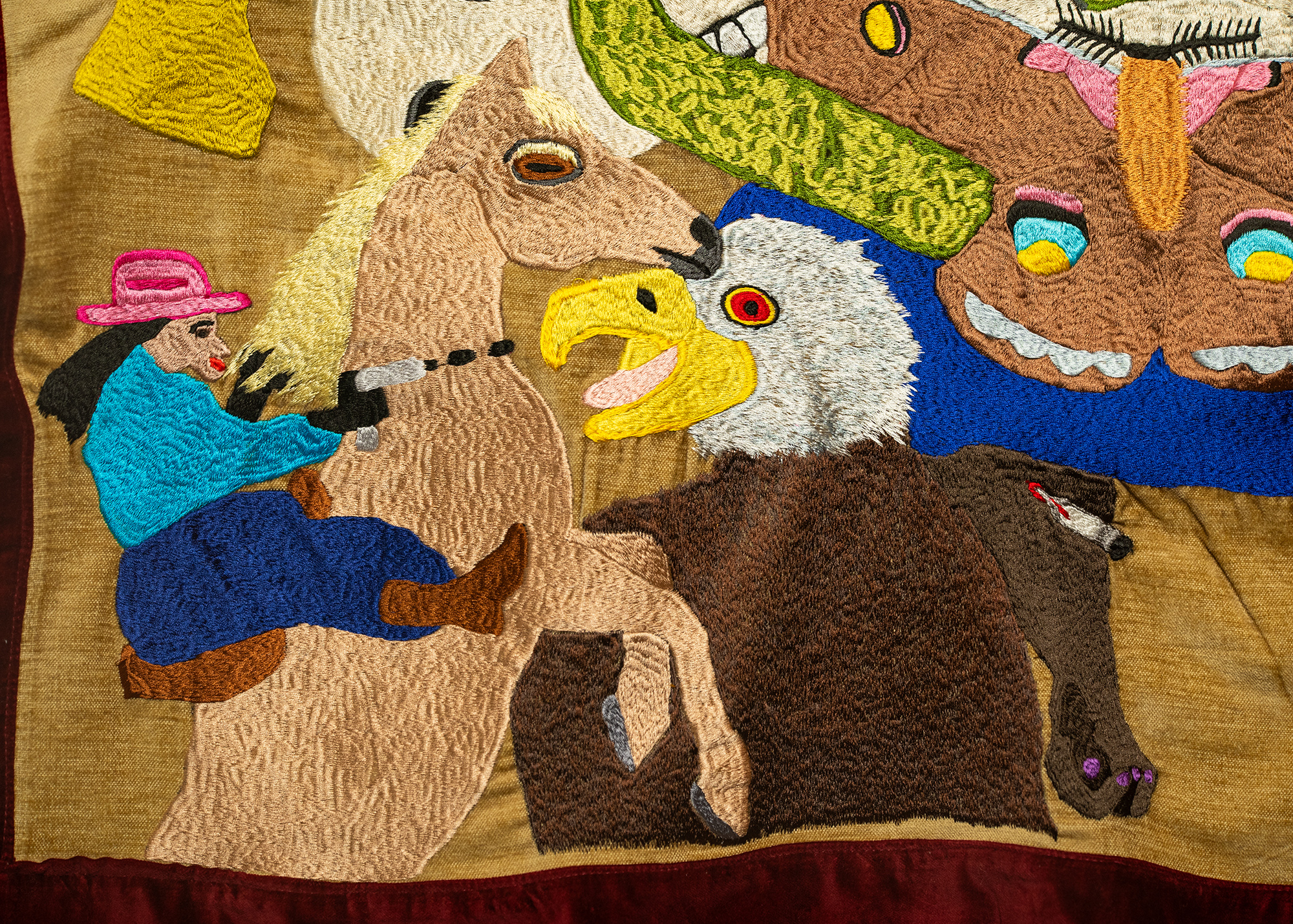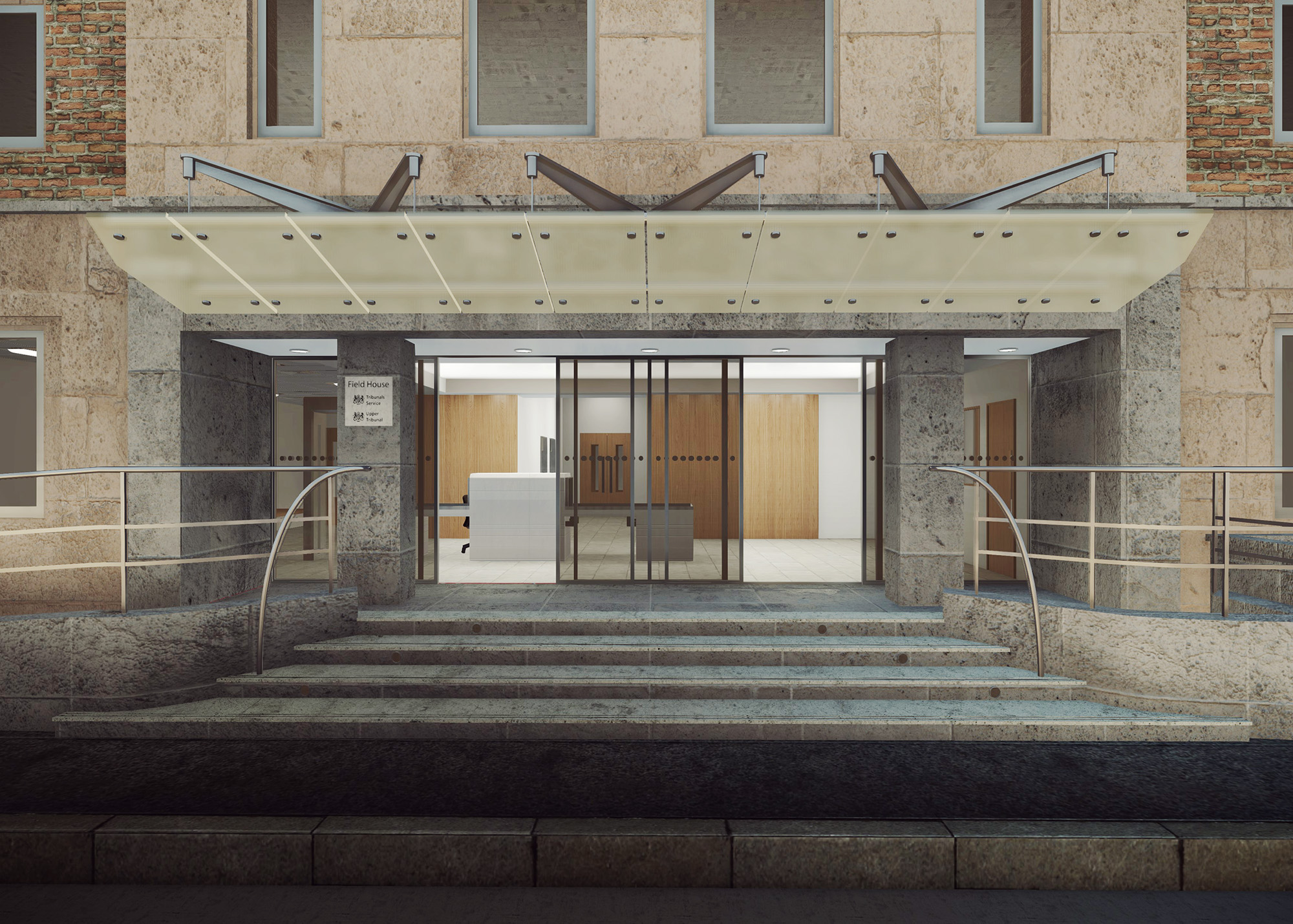No. 54
are we there yet?
Group show
February 14 - April 12, 2025
OPENING: 14 February 2025
NOME is pleased to announce are we there yet?, a group exhibition that critically examines issues of police brutality, mass incarceration, discrimination, immigration, and state surveillance. The show draws its title from a work by Kameelah Janan Rasheed, whose aphoristic text-based practice often grapples with complex societal questions. As with many of her works, are we there yet? carries multiple meanings, symbolizing both a push for equality and the darker undercurrents of state violence. The exhibition invokes Rasheed’s question to probe the spread of authoritarianism in contemporary society.
are we there yet? brings together a diverse group of artists whose works interrogate systems of control, power, and resistance. James Bridle’s video Seamless Transitions explores sites of immigration judgment, detention, and deportation, using image-making technologies to visualize places and processes that would otherwise be obscured from view. Paolo Cirio’s photographs explore privacy and surveillance through works like Obscurity, which appropriates mugshot website images and manipulates them with a custom algorithm to render individuals unrecognizable. Cian Dayrit’s sculpture A Muse to Abuse, presented for the first time outside of the Philippines, offers a powerful commentary on the lingering effects of colonialism. Navine G. Dossos presents a poster with logos of different environmental organizations that the British government has labeled as “terrorist.” Ahmet Öğüt presents a series of sculptures based on archival photographs of people who were attacked by police dogs, drawing a visceral connection between historical and contemporary acts of police violence. Igor Grubić’s East Side Story juxtaposes footage of incidents where participants in Gay Pride demonstrations in Belgrade (2001) and Zagreb (2002) were subject to verbal and physical abuse by neo-Nazi groups and other citizens with a video performance in which dancers performatively reconstitute the events. Kite presents a video about LAPD tactics to suppress protest, while a work by Voluspa Jarpa evidences police brutality against civilians during the 2020 protest in Santiago de Chile.
are we there yet? will also feature new works by Camae Ayewa and Danielle Brathwaite-Shirley, both of whom were commissioned to create pieces for the show and will join NOME’s program in 2025, as well as new and recent works from Sadie Barnette, Aram Bartholl, Dread Scott, Myriam Zarhloul, Priscilla Dobler Dzul and Kameelah Janan Rasheed, who together offer a multifaceted exploration of police violence, state surveillance, and the enduring fight for justice.
Artists: Camae Ayewa, Sadie Barnette, Aram Bartholl, Danielle Brathwaite-Shirley, James Bridle, Paolo Cirio, Cian Dayrit, Priscilla Dobler Dzul, Navine G. Dossos, Igor Grubić, Kite, Kameelah Janan Rasheed, Voluspa Jarpa, Ahmet Öğüt, Dread Scott, Myriam Zarhloul.
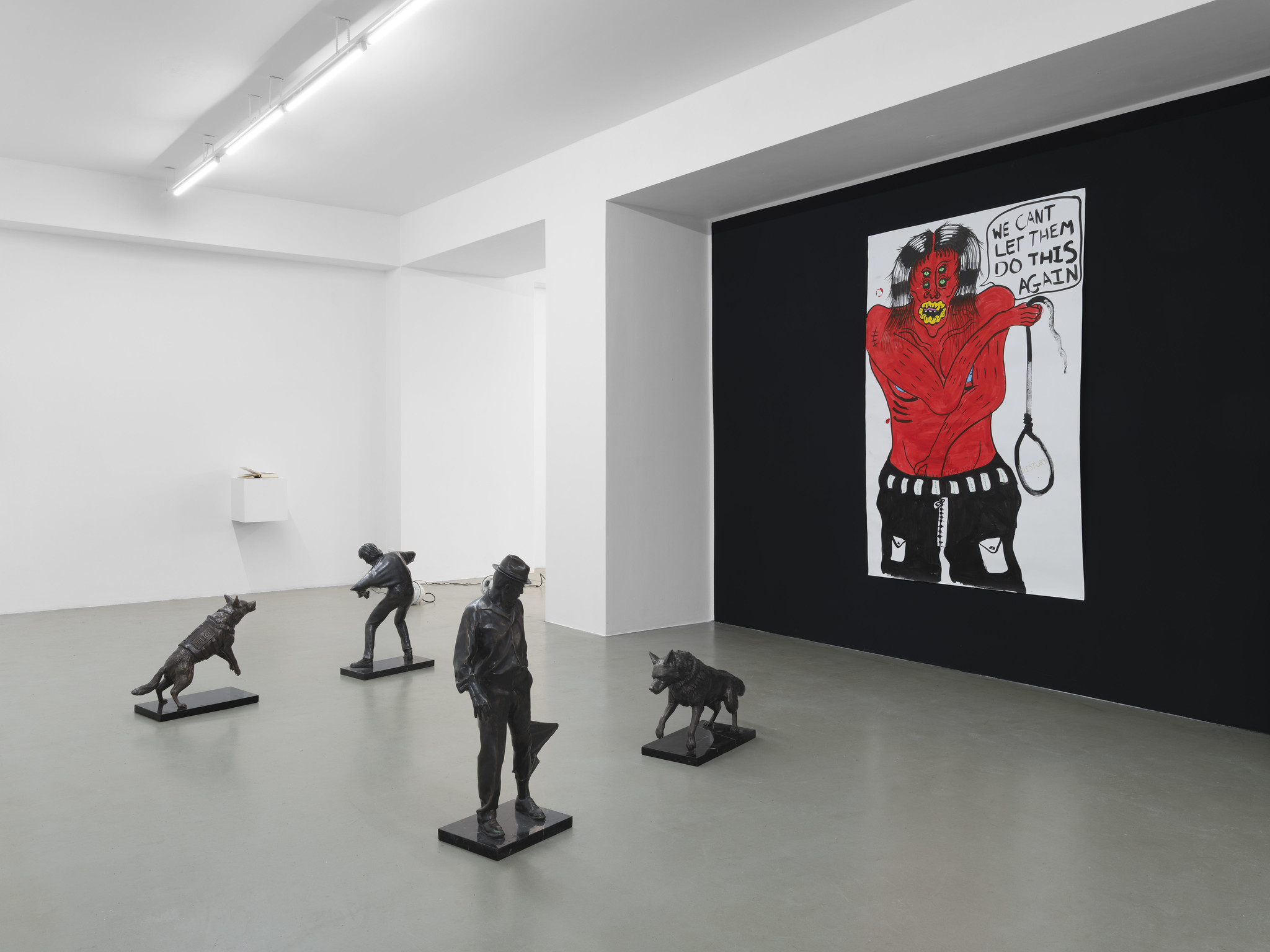
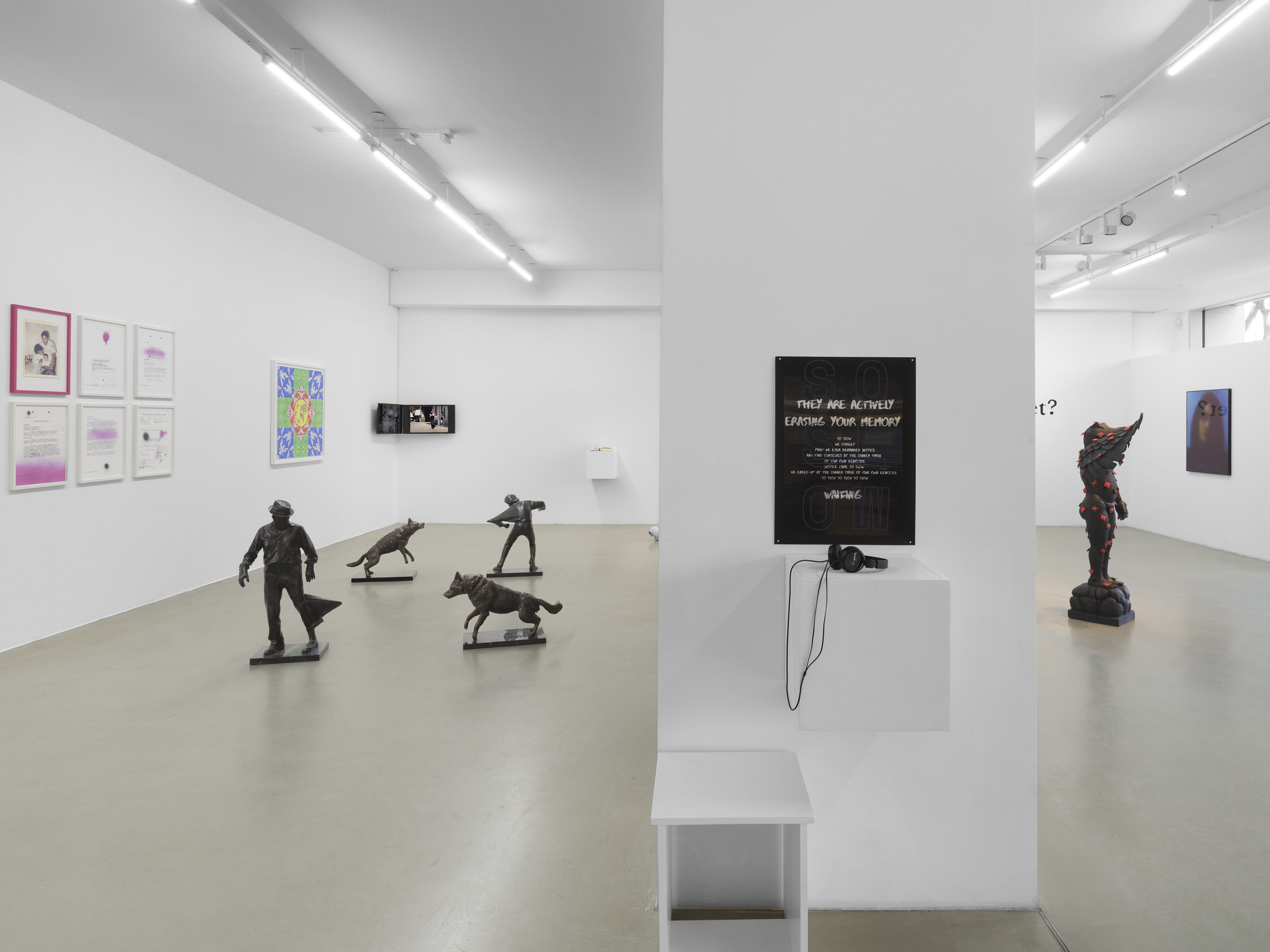
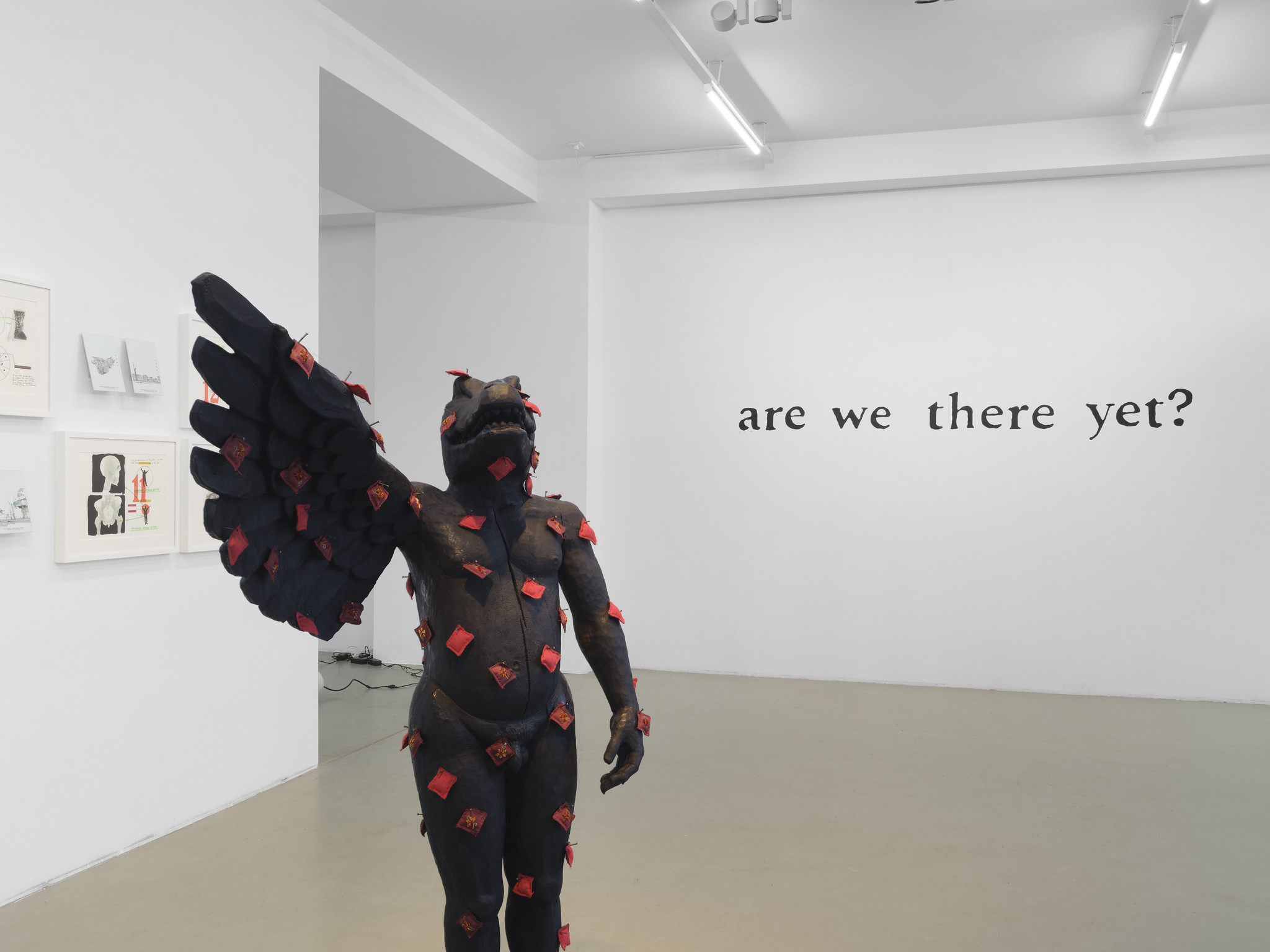
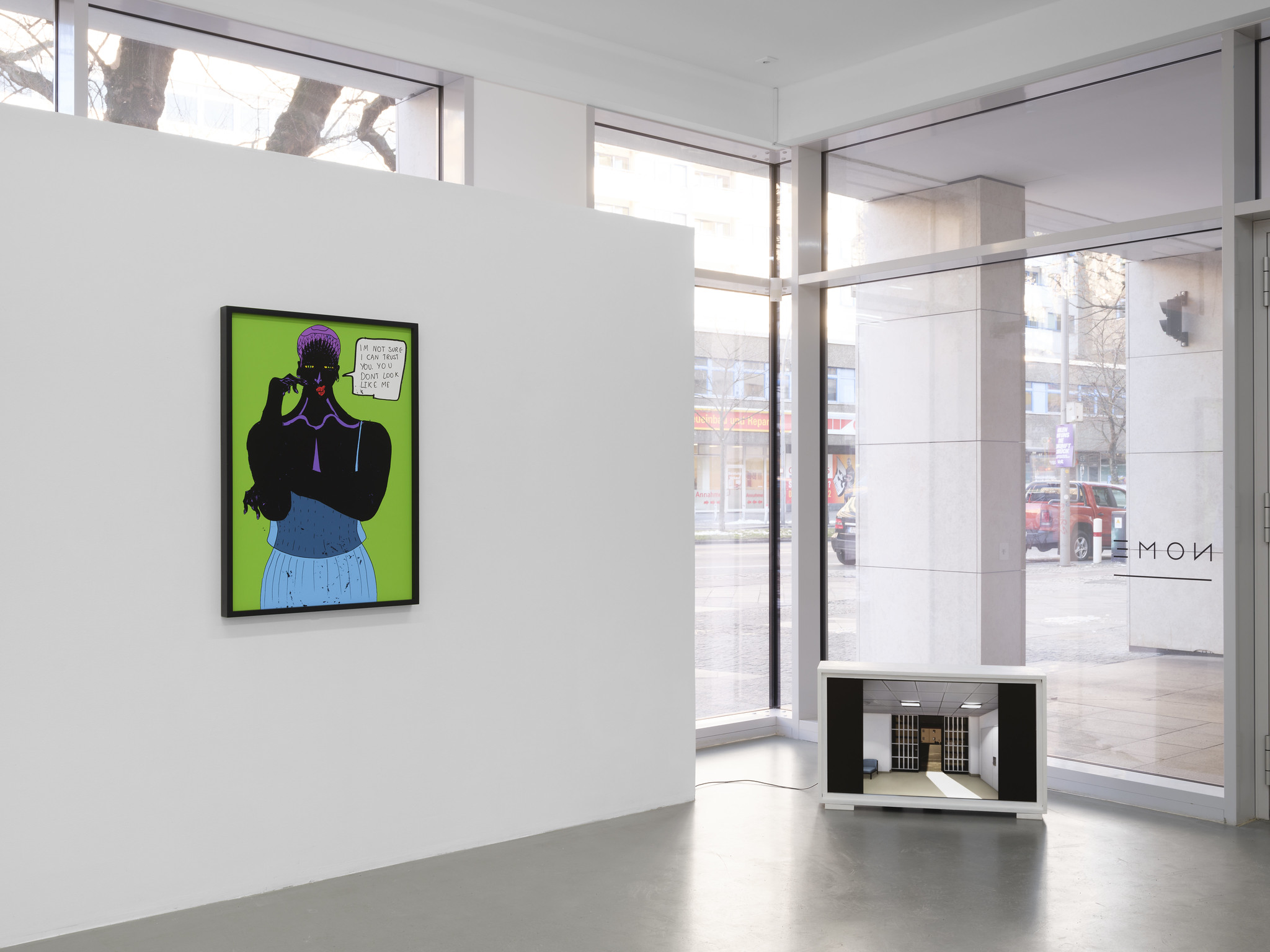
Photos by Marjorie Brunet Plaza
No, Not Yet By Romi Crawford
More interesting than obvious, loud, and active proclamations against injustice and state violence are the mundane gestures and stuffs that reference it obtusely. Resistance at this register, and of this sort, is often barely recognizable. It’s in the crevices of daily life. It is a quiet practice, rather than part of a show and tell event. It does not take the form of a grandstanding or commanding display.
Rather resistance of this kind interpolates and absorbs the fact of state sanctioned aggression. Yes, it pushes against it, but crucially it does not deny it. It assumes police brutality, mass incarceration, discrimination, immigration issues, and state surveillance as embedded, rooted preconditions. Even during intervals of calm, these persist– across a range of countries, communities, and contexts, and must be countered with an equally persistent zeal. Many of the projects in “are we there yet” point to resistance of this (subtler) type which implicates the ordinary. As such, routine aspects of quotidian life are recast as and re-oriented for its purposes. A book, for example in a Dread Scott work is the harbor place for a more directly protective instrument (a gun); FBI files are re-cast as intimate and familial in a piece by Sadie Barnette; and a project by Myriam Zarhloul offers the simple act of a gratitude list, with all its qualities of self-help like sentimentality. These and other works in the exhibit address the potential for resistance in resolutely commonplace objects and acts (a book, saying thank you, family archives, etc.)
are we there yet?, the question which frames the exhibition borrows, in this context, from a Kameelah Janan Rasheed work. In a sense the answer to the questions is a resounding “no,”– as there is no clear end in sight to socially repressive processes. At the same time, the long game of totalitarianism has produced the long game around resistance to it. This too flourishes and has evolved and has a range of tactics, including those that emerge from quotidian logics, such as those implicated or insinuated in the exhibition. Paolo Cirio’s use of mugshots; the deploy of poetry in Camae Ayewa’s work; Aram Bartholl’s and Kite’s reminders that technological surveillance is ubiquitous; Danielle Brathwaite-Shirley’s use of gore to signal daily suffering; James Bridle’s attention to immigration process spaces; the use of fabric in Cian Dayrit’s sculpture; Priscilla Dobler Dzul’s nod to the environment, Navine G. Dossos’s commitment to art (paintings) to narrate an atrocity; Igor Grubic’s focus on basic movement and gesture; and the pedagogical elements of Voluspa Jarpa’s and Ahmet Ögüt’s works, all ponder rather locatable, close at hand, readily available devices, that might be called upon in an instance and without much time to prepare.
They invoke and portend tactics for resistance that are ready made and available to us, lurking just beneath the surface or beside or ancillary to the projects that work towards our defeat. In effect, the works in “are we there yet” signal, not a single, momentous occasion when the troubles are resolved or quelled, but various tactics that all have their time and place to be activated.
Romi Crawford





